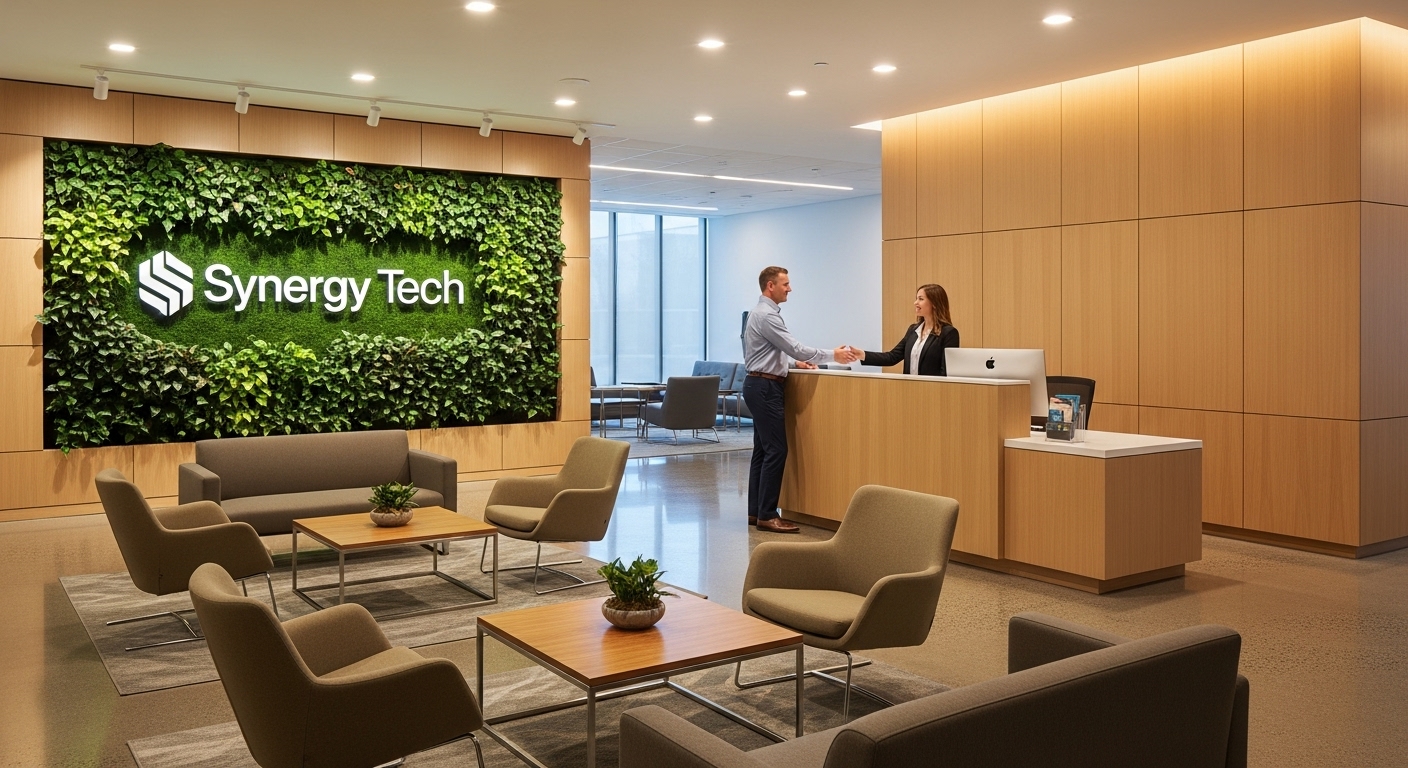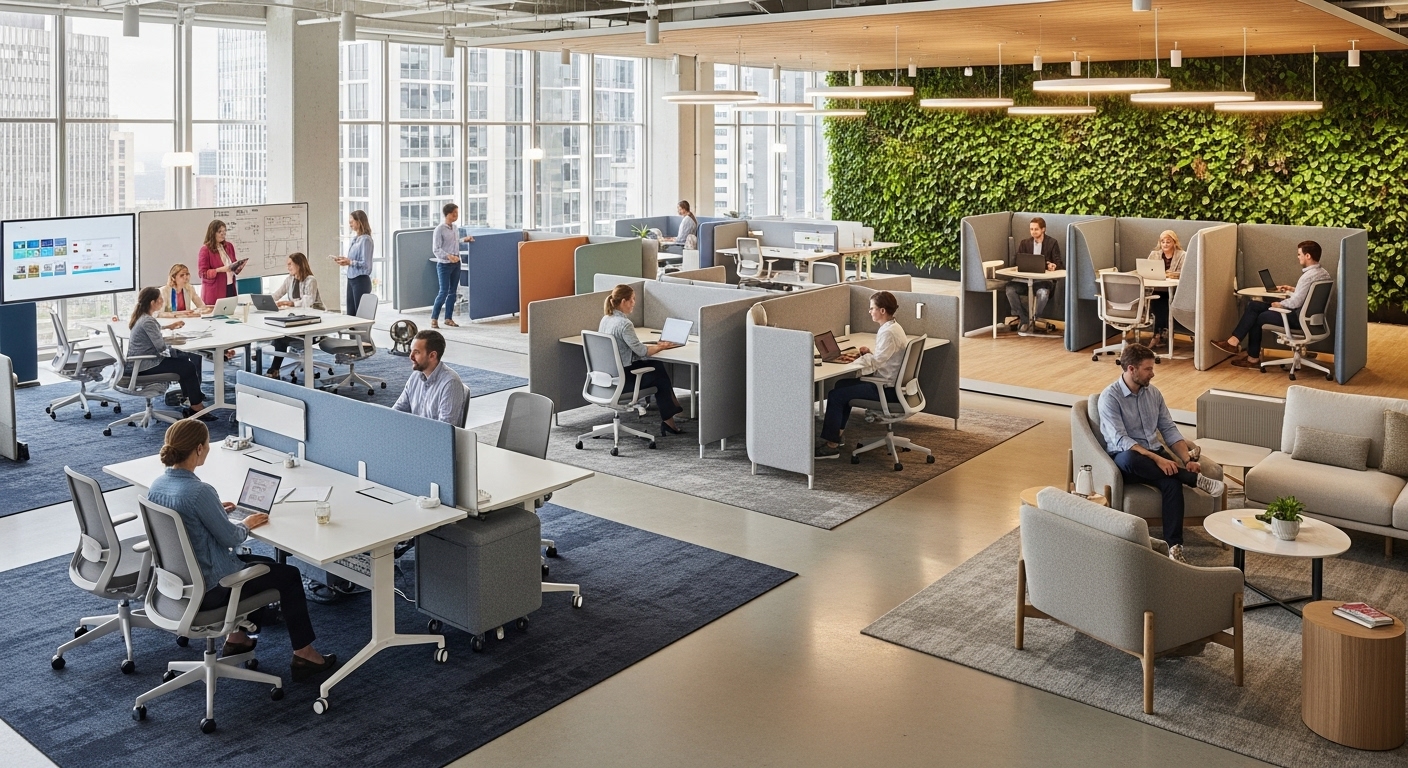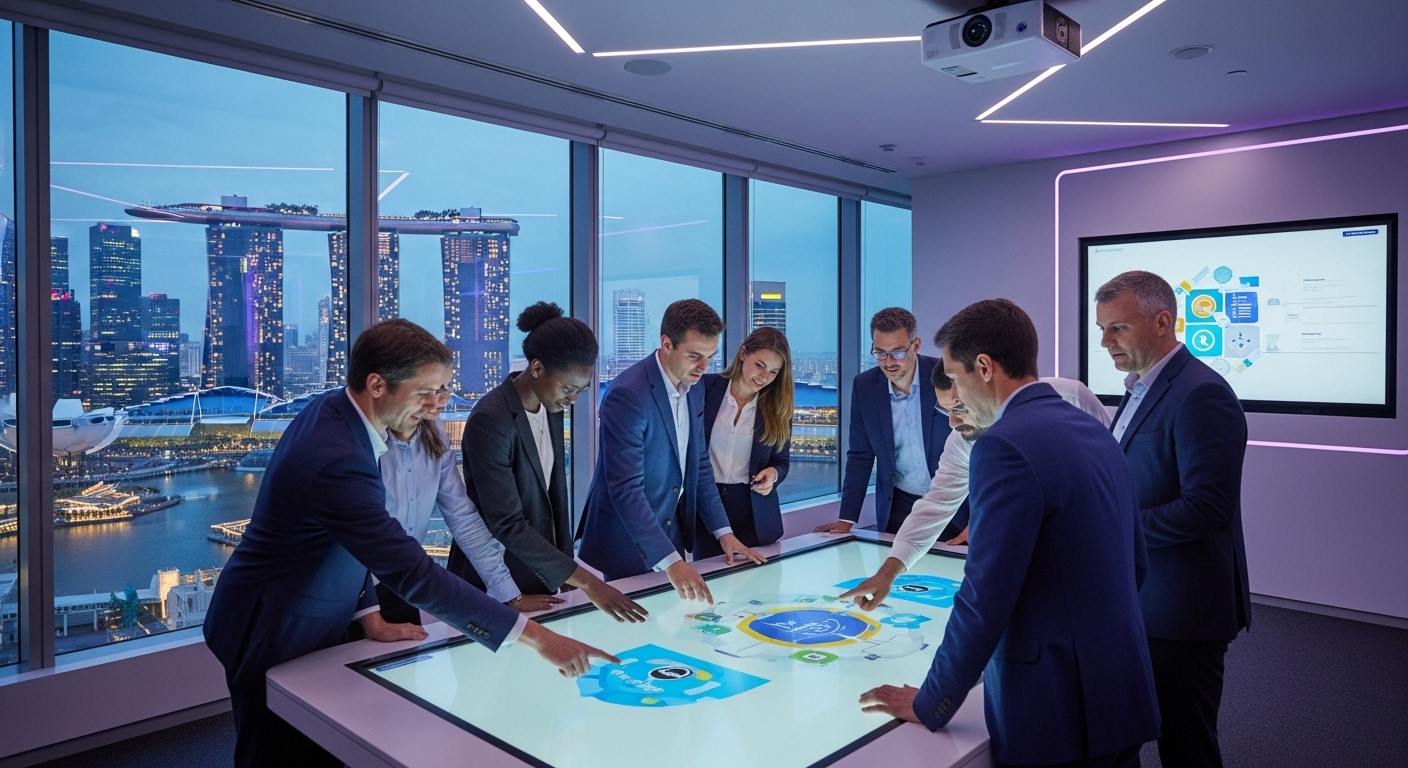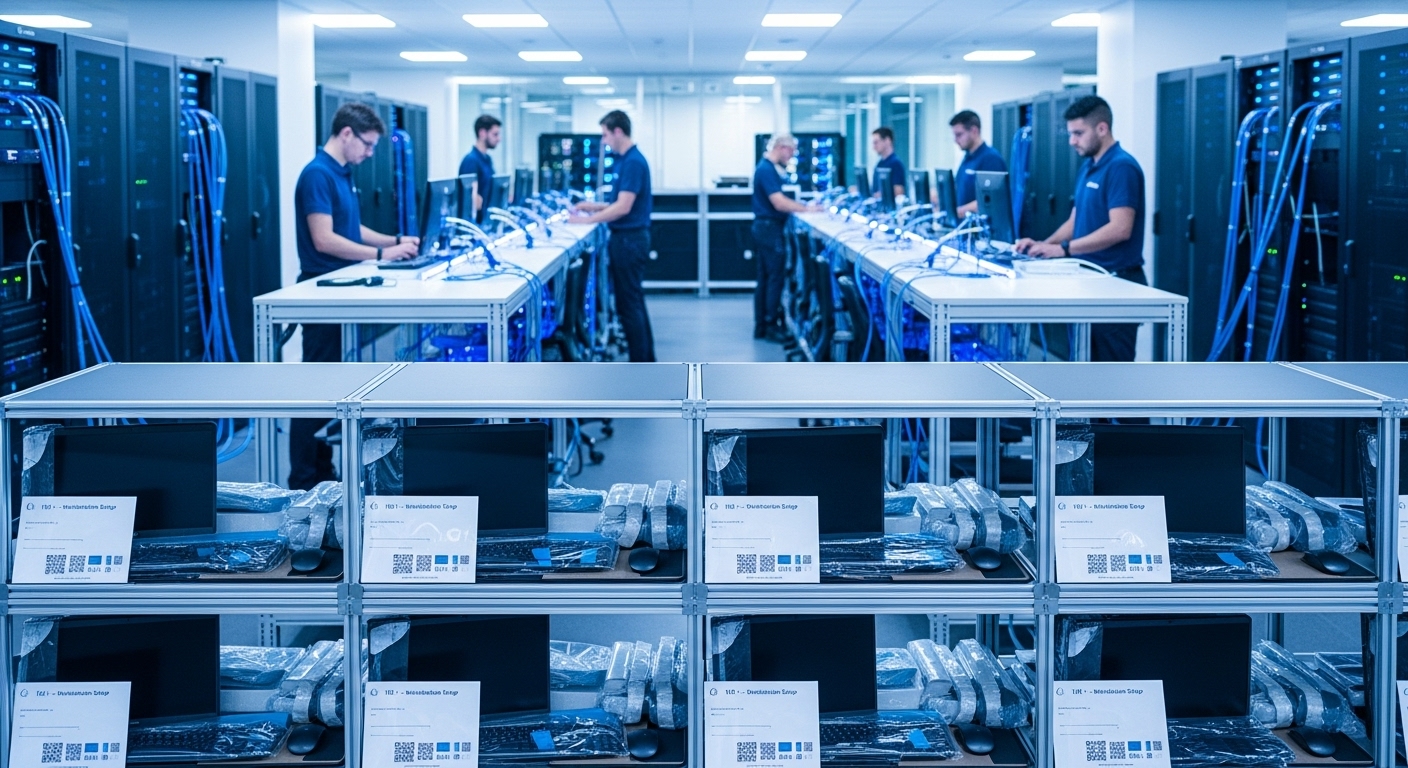In today’s competitive landscape, an office is no longer just a physical location for work; it’s a powerful communication tool and a cornerstone of corporate culture. Gone are the days of sterile cubicle farms defined by beige walls and fluorescent lighting. The modern workspace is an experience, a narrative, and a living embodiment of a company’s brand. As businesses grapple with attracting top talent and fostering a cohesive culture in a hybrid world, the strategic design of their physical environment has become more critical than ever. It’s about creating a destination that employees want to come to, a space that tells a story to clients the moment they walk in, and an environment that actively reinforces the values the company stands for. This goes far beyond placing a logo in the lobby. This article provides a comprehensive blueprint for transforming your workspace from a mere container for employees into a dynamic, brand-infused asset. We will explore how to translate abstract brand values into tangible design elements, leverage sensory experiences to create a lasting impression, and ultimately, build a space that works as hard as your team does.
1. Decoding Your Brand DNA: The Foundation of Spatial Identity
Before a single wall is painted or a piece of furniture is ordered, the most critical step is a deep dive into your brand’s core identity. A workspace that genuinely reflects a brand must be built on a foundation of self-awareness. This process involves looking past the visual style guide and into the very soul of the organization. Start by articulating your company’s mission, vision, and core values. Are you about innovation and disruption, or stability and trust? Is your culture built on high-energy collaboration or quiet, focused work? Answering these questions provides the conceptual framework for every subsequent design decision. For instance, a brand that prides itself on ‘transparency’ might translate that into glass walls, open-plan layouts, and accessible leadership offices. A company focused on ‘sustainability’ would prioritize reclaimed materials, biophilic design with abundant plant life, and energy-efficient systems. This foundational stage requires workshops and conversations with stakeholders from all levels of the organization, from the C-suite to new hires. The goal is to distill your brand essence into a set of actionable design principles. For example, ‘Bold and Daring’ could become a principle of ‘High-Contrast Colors and Asymmetrical Layouts,’ while ‘Human-Centric and Caring’ might lead to ‘Ergonomic Furniture, Soft Textures, and Wellness-Focused Amenities.’ Without this introspective work, you risk creating a space that is aesthetically pleasing but emotionally vacant, a collection of design trends without a unifying story. It is this authentic translation of values into a physical brief that separates a generic office from a true brand landmark.
2. The Psychology of Color and Texture: Crafting an Emotional Response
Once your brand DNA is decoded, you can begin to build a physical and emotional language through color and materials. This is far more sophisticated than simply splashing your logo’s primary colors everywhere. Overuse can feel oppressive and uninspired. Instead, a strategic approach uses color psychology to evoke specific moods and behaviors that align with your brand’s personality. For example, blues and greens are known to have a calming, focusing effect, making them ideal for areas dedicated to deep work. Energetic colors like yellow or orange can stimulate creativity and conversation, perfect for brainstorming rooms and social hubs. A sophisticated palette might use neutral tones as a base to create a sense of calm professionalism, with strategic ‘pops’ of brand colors to guide the eye, define zones, and add personality. Texture plays an equally important role in this non-verbal communication. The materials you choose tell a story. Polished concrete floors, exposed steel beams, and raw brick walls can convey an industrial, innovative, and edgy brand. In contrast, warm woods, soft textiles, and plush carpets create a feeling of comfort, stability, and tradition. Consider how these elements work together. A tech startup wanting to project both cutting-edge innovation and a human-centric culture might pair sleek, minimalist desks with reclaimed wood accent walls and soft, comfortable seating in collaborative areas. This tactile dimension is often what makes a space feel authentic and memorable, influencing how employees and visitors feel on a subconscious level. It’s the difference between a space that looks like your brand and a space that feels like it.
3. Wayfinding and Environmental Graphics: Guiding the Experience
Environmental graphics and wayfinding systems are the narrative voice of your workspace. They are the most direct way to communicate your brand’s story, values, and personality throughout the physical environment. Effective wayfinding is about more than just legible signs pointing to the restroom or conference rooms; it’s a choreographed journey that makes the space intuitive and reinforces brand identity at every turn. This starts with a clear hierarchy of information. What does a visitor need to know first? Where do employees congregate? The design of the signage itself—typography, iconography, and materials—should be a direct extension of your brand’s visual identity. But it can go so much further. Consider large-scale wall murals that depict your company’s history or a data visualization of its global impact. Use quotes on walls from company leaders or industry pioneers that reflect your core mission. Naming conventions for meeting rooms can also be a powerful branding tool. Instead of ‘Conference Room 3B,’ rooms could be named after company milestones, inspirational figures, or even inside jokes that reflect the internal culture. This creates a unique language for the space that makes employees feel like insiders. The strategic placement of these graphics can also help define different zones within the office. A bold, high-energy graphic might signal a collaborative zone, while subtle, minimalist art could denote a quiet area for focused work. These elements turn passive walls and hallways into active brand touchpoints, constantly and subtly communicating who you are as a company.
4. Furniture and Layout as Brand Storytellers
The layout of your office and the furniture you choose are powerful, non-verbal declarations of your company’s culture and operational priorities. An office dominated by rows of identical desks in an open plan sends a very different message than one composed of flexible zones with a variety of seating options. The former might suggest a focus on process and uniformity, while the latter signals a belief in flexibility, autonomy, and activity-based work. When selecting furniture, consider both form and function. The aesthetic should align with your brand identity—be it modern and minimalist, eclectic and vibrant, or classic and refined. But the function is what truly reveals your values. If collaboration is a key value, investing in large communal tables, comfortable lounge areas with whiteboards, and easily reconfigurable furniture demonstrates a tangible commitment. If deep, focused work is essential for productivity, providing private pods, acoustic baffling, and high-backed ‘focus chairs’ shows that the company understands and supports different work styles. The ratio of ‘we’ space to ‘me’ space is a critical brand statement. How much square footage is dedicated to individual work versus collaborative work? Where is leadership located? Are their offices separate and inaccessible, or integrated and approachable? These decisions telegraph messages about hierarchy, transparency, and accessibility. Even the choice of task chairs is a branding opportunity, signaling whether the company prioritizes short-term cost savings or long-term employee well-being and ergonomic health. Every element, from the boardroom table to the breakroom stools, contributes to the overarching brand narrative.
5. Sensory Branding: Engaging Beyond the Visual
The most immersive and memorable brand experiences are those that engage multiple senses. While sight is the most obvious, considering sound, scent, and even touch can elevate a workspace from a well-designed office to a truly brand-infused environment. This is the realm of sensory branding. Sound, or acoustics, is a critical starting point. An office that values focused work must invest in sound-dampening materials, acoustic panels, and quiet zones to mitigate the distractions of an open-plan environment. Conversely, collaborative and social areas can be enhanced with strategically placed speakers playing curated playlists that match the desired energy level of the space and time of day—perhaps upbeat and motivating in the morning, and more relaxed in the afternoon. Scent is an incredibly powerful tool due to its direct link to memory and emotion. A subtle, custom-designed ambient scent in the lobby or common areas can create a unique and lasting brand impression. A spa or wellness brand might use a calming lavender or eucalyptus scent, while a luxury retail brand might opt for a sophisticated leather or sandalwood fragrance. The key is subtlety; the scent should be barely perceptible, operating on a subconscious level to create a positive association with the space. Finally, touch, as discussed with materials, extends to the small details. The weight of the door handles, the quality of the coffee mugs in the kitchen, and the texture of the notebooks provided to employees all contribute to the tactile experience of the brand. These multi-sensory layers work in concert to create a rich, cohesive, and deeply resonant brand environment that a purely visual approach can never achieve.
6. Integrating Technology as a Brand Touchpoint
In a modern workspace, technology is not just a utility; it’s an integral part of the brand experience. Seamlessly integrating technology into the physical environment can enhance functionality while powerfully reinforcing your brand’s identity as forward-thinking and user-centric. This goes well beyond providing fast Wi-Fi (though that is a crucial baseline). Consider the employee and visitor journey from the moment they enter. Is the guest check-in process handled by a clunky sign-in sheet or a sleek, branded tablet interface that notifies the host automatically? Are conference rooms booked through a frustrating email system or via intuitive digital panels outside each door that show availability at a glance? These touchpoints communicate efficiency and a respect for people’s time. Digital displays and video walls offer dynamic canvases for brand storytelling. Instead of static posters, these screens can showcase new projects, welcome important clients by name, celebrate employee milestones, or stream live data that’s relevant to your business. This turns informational content into an engaging, real-time reflection of the company’s pulse. Even the back-end infrastructure can be a brand statement. A simple, memorable Wi-Fi password that reflects company culture is a small but impactful detail. Providing ample, accessible power outlets and wireless charging stations demonstrates an understanding of modern work habits. The goal is for technology to feel like a natural, helpful extension of the space—making work easier, collaboration smoother, and the office itself a smarter, more responsive environment that reflects a brand at the cutting edge.
7. Measuring the ROI of a Branded Workspace
Investing in a strategically branded workspace is a significant undertaking, and leaders rightly want to understand the return on that investment (ROI). While some benefits are qualitative, many can be measured through clear and impactful metrics. The most immediate impact is often seen in talent acquisition and retention. A thoughtfully designed office is a powerful recruiting tool. During interviews, track candidate feedback on the environment. Monitor your offer acceptance rate and ask new hires what role the physical office played in their decision. For retention, regular employee engagement and satisfaction surveys are crucial. Include specific questions about the work environment, asking how it supports their productivity, collaboration, and sense of belonging. A decrease in voluntary turnover rates post-redesign is a strong indicator of success. Productivity metrics can also be revealing. While harder to isolate, you can look for trends in project completion times or team performance pre- and post-occupancy. The design’s impact on brand perception can be measured through client and partner feedback. Do they comment on the space? Does it seem to enhance their view of your company as professional, innovative, or creative? Ultimately, a well-branded space should function as a catalyst for culture. When the physical environment consistently reinforces the desired behaviors and values, it helps create the alignment needed for high performance. The ROI is not just in the aesthetics; it’s in building a more engaged, productive, and loyal team, and in projecting a powerful, coherent brand story to the outside world. This transforms the office from a cost center into a strategic asset for growth.
In conclusion, branding your space is a profound act of corporate storytelling. It’s an evolution from thinking of an office as overhead to leveraging it as a strategic asset. The blueprint outlined here demonstrates that an authentic, brand-infused workspace is born from a deep understanding of your company’s DNA. It begins with decoding your core values and translating them into a coherent design language. This language is spoken through the intentional use of color and texture to evoke emotion, the clarity of environmental graphics to guide and inform, and the powerful statements made by furniture and layout about your culture and priorities. By layering in sensory elements like sound and scent and seamlessly integrating user-friendly technology, you can create a truly immersive environment. This holistic approach moves far beyond the superficial application of a logo. It’s about building a space that feels like your brand, fosters your desired culture, and actively supports the well-being and productivity of your most valuable asset: your people. The return on this investment is measured not just in aesthetics, but in enhanced talent attraction, improved employee engagement, and a clear, compelling brand message projected to every person who walks through your doors. Your workspace is one of your most visible and constant brand ambassadors; it’s time to ensure it’s telling the right story.





